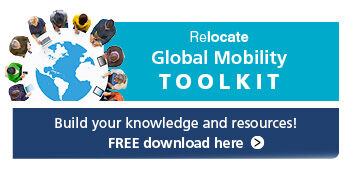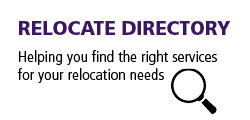Flexibility and agility after Covid-19: Global Mobility’s new reality
Global Mobility has already shown it can support flexibility and agility in the workforce. Yet post-pandemic, Global Mobility leaders need to be articulating the skillset of their teams like never before.
Flexibility to face the future
A rising trend within Global Mobility has been the challenging of the traditional home vs host long-term assignment models with what we term core-flex models to achieve that perfect balance of cost effectiveness and assignee choice. This changing focus has led to more tailored packages that provide greater individual support and maximised employee engagement.Technological advances too mean Global Mobility leaders can no longer cite unfeasible administrative burdens to ignore flexible models. The conversation has now switched to technology budgets and the fit, or not, of tools and technologies with an organisation’s culture. Technology disruption, in booming and challenging economies, requires a different skillset in the workplace. Digital skills, analytics and cyber specialists, to name a few, are all in demand in every sector, focusing attention again on the supply of talent across all sourcing methods. A 2018 survey of FTSE 100 organisations showed that 61% said they were actively redesigning jobs around artificial intelligence, robotics and new business models. Global Mobility needs to get a foothold in this type of workforce This will enable teams to demonstrate to business leaders the benefits of flexible assignments, of all varieties, and to continue to challenge the myth that mobility is all about traditional one-to-three year postings.Talent mobility
With commuter assignments, rotations, extended business trips, project-based deployments, perhaps contractors, flexible arrangements and other short-term options, Global Mobility teams have potentially more in their arsenal now to meet business needs than ever before. International permanent transfers also remain relevant. They can play a critical role in the right organisation by helping to retain key individuals.The use of these varied options can be extensive or minimal, depending on the nature of your organisation, but all will require a re-examination of their suitability in the months ahead. With hiring freezes and escalating repatriations likely in the post-Covid world, it will be vital for an organisation’s success to conduct a skills audit of its workforce. This should ensure the strategic deployment of talent to the right markets to maximise their physical or virtual potential. Care must also be taken to ensure that a mobility solution isn’t employed simply to fill a short-term skills gap that actually requires a more long-term development solution – another clear argument for the importance of strategic planning.Agility
Even prior to Covid-19, the global immigration landscape saw significant shifts towards the tightening of work permissions in favour of promoting local labour markets, such as in Switzerland and the US. The UK, meanwhile, has yet to see the full impact of Brexit and a new immigration system that will provide additional opportunities and challenges across all industries. Simultaneously with the rise in remote working, Global Mobility has seen increasing numbers of people expecting to work wherever they want, irrespective of what their contract stated. Many Human Resources and Global Mobility professionals have uncovered, by accident, individuals who live full- time outside their employing country, but who think this is ok as long as they work when required.Ignorance is no defence in the eyes of the law or tax authorities. Even if you are fortunate enough to be aware of these types of arrangements before they occur, the levels of consultation and key compliance discussions can be far from straightforward. The subsequent price tag to maintain and support the situation at hand will quickly focus a business leader’s attention on the cost benefit analysis of a particular employee who was previously considered indispensable. With a cross-border commuter/remote-working policy and compliance process as well as a budget for the advisers, it is far easier to respond to these requests as they increase and to respond to the next challenge on the horizon – virtual assignments.Related article:
Global mobility: time for action as companies rebuild
The rapid-response phase to global Covid-19 lockdowns put the value of Global Mobility into sharp relief. Now its expertise has a key strategic role in rebuilding corporate competitive advantage.The new reality post Covid-19
With many countries emerging from lockdown, is it premature to consider what the longer-term impact to Global Mobility might be? After an initial flurry of activity from assignees considering whether to stay put or repatriate quickly before borders closed, the landscape is becoming slightly clearer. Some tax authorities have issued temporary relaxation of rules around residency and permanent establishment to facilitate those remotely working from other jurisdictions, so longer-term decisions can also be contemplated. In the past, the primary driver for increasing commuter assignments, including week-away models, has been personal circumstances. Looking ahead, there is the potential to see those who have been globally minded now feeling stronger ties to home and family, and potentially reconsidering the practicalities of the distance between them. While traditional physical mobility will likely decline in the immediate future, past recessions have shown that it is unlikely to cease completely. Physical, strategic deployments have the capacity to build diverse talent pools, diversity of thought , and a global mindset within future leaders. Those more forward-thinking Global Mobility professionals are already talking about longer-term increases in virtual assignments, where employees either stay in their home-country while working for another “host” entity or work from a third-country altogether, using technology to facilitate their day-to-day role. The ease with which many have continued to work almost seamlessly in their current roles, while operating remotely, has increased an understanding of its potential. To collectively move an organisation into multiple virtual assignments should not be a knee-jerk reaction. Despite it removing most, if not all, immigration issues, the danger here is that the concept will attract business leaders’ attention as a cheaper alternative to traditional mobility, before they are briefed on the compliance hurdles that remain, especially with regard to data protection. In most organisations, once agreed in principle, this type of arrangement would require approval by at least eight different experts across risk, information technology, data protection, personal taxation, corporate taxation, immigration, human resources and payroll.What role for Global Mobility advisors?
Following the changing talent dynamics of the past, many Global Mobility functions have already nurtured the skillset to coordinate multi-disciplinary expert teams to fulfil business objectives. This can be replicated for arrangements requiring no physical cross-border movement. As Global Mobility professionals, we have proved our agility and flexibility, even if our industry has until now on the whole been slow fully to embrace both concepts. Successful Global Mobility functions should be able confidently to adapt and thrive in rapidly changing environments. Strong frameworks are hopefully already in place, even in embryonic form, to support the post Covid-19 needs of businesses trying to stay the course as the expected economic recession unfolds. There will undoubtedly be challenges concerning the headcount of Global Mobility teams, particularly as leaders assume the post-pandemic situation will reduce overall global movement. Yet by clearly demonstrating how Global Mobility has already managed to support flexibility and agility in the workforce, it is well positioned to coach senior leaders through the changes ahead. Global Mobility leaders need to be articulating the skillset of their teams like never before.Subscribe to Relocate Extra, our monthly newsletter, to get all the latest international assignments and global mobility news.Relocate’s new Global Mobility Toolkit provides free information, practical advice and support for HR, global mobility managers and global teams operating overseas.
 Access hundreds of global services and suppliers in our Online Directory
Access hundreds of global services and suppliers in our Online Directory
©2025 Re:locate magazine, published by Profile Locations, Spray Hill, Hastings Road, Lamberhurst, Kent TN3 8JB. All rights reserved. This publication (or any part thereof) may not be reproduced in any form without the prior written permission of Profile Locations. Profile Locations accepts no liability for the accuracy of the contents or any opinions expressed herein.









































